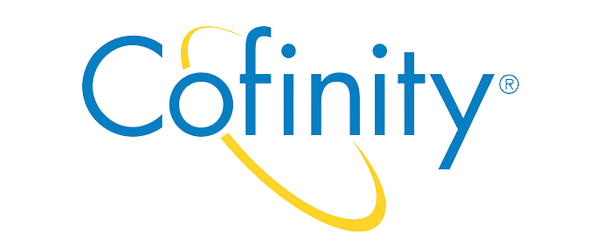Brainspotting
Brainspotting is a unique therapy for processing traumatic experiences. Creekside Recovery Group offers several innovative therapies, like brainspotting, at our mental health and addiction treatment centers.
Creekside Recovery Network offers a wide range of therapies and support services so that we can provide a truly personalized experience for those who turn to us in their time of need. For individuals whose behavioral health struggles are related to untreated trauma, brainspotting therapy can be a valuable component of treatment.
What is Brainspotting Therapy?
Brainspotting therapy, which is sometimes referred to as BSP, is a relatively new form of therapy that was originally developed to help people who had been experiencing emotional distress due to untreated trauma.
The founder of brainspotting therapy is David Grand, PhD. Dr. Grand developed this type of treatment while working with trauma survivors.
- Brainspotting therapy shares some similarities with eye movement desensitization and reprocessing (EMDR) therapy, which is also commonly employed to help people process traumatic memories in a healthy manner.
- Brainspotting therapy is also somewhat similar to somatic experiencing (SE), another form of trauma treatment that addresses the ways that psychological trauma may be stored in the body.
During a brainspotting therapy session, the therapist will use their finger, a pointer, or another implement to guide the patient’s vision and locate their “brain spot.” The brain spot is the location where the patient naturally focuses their vision when they are experiencing physical or psychological pain.
This use of eye movement is one of the primary ways that brainspotting therapy is similar to EMDR. However, unlike the rapid side-to-side eye movements that are employed in EMDR sessions, the patient’s vision during a brainspotting therapy session remains focused on one fixed point.
What is Brainspotting Therapy Used For?
Brainspotting therapy is used to help people overcome the negative impact of traumatic memories. Here’s a quick overview of how that can work:
- At the outset of a brainspotting therapy session, the patient will identify a specific trauma-related concern that they want to address.
- The brainspotting therapist will help the patient identify where the pain from this concern is stored in their body.
- Then, using the slow eye movement described in the previous section, the brainspotting therapist will help the patient find the visual focus area that is linked to this pain.
- With their vision focused on an identified brain spot area, the patient will discuss the traumatic memory, along with the negative emotions and other psychological repercussions that are associated with the incident.
- With continued guidance and feedback from the brainspotting therapist, the client can begin to process the trauma and lessen the pain they feel when they remember or speak about it.

How Can Brainspotting Help in Addiction Treatment
Trauma is unfortunately common in the United States and elsewhere in the world. The National Center for PTSD reports that most Americans will have at least one traumatic experience over the course of their lifetime, and about 6% of U.S. adults will develop PTSD.
Many people who struggle with PTSD and other effects of trauma attempt to self-medicate or numb themselves with alcohol and other drugs. This behavior can expose people to considerable harm, including the development of a substance use disorder (which is the clinical term for addiction).
When someone is living with addiction and co-occurring trauma, it is imperative that treatment address both concerns. In such cases, brainspotting therapy can help patients in important areas such as:
- Processing their trauma in a healthy manner
- Minimizing the emotional distress that may have pushed them into substance abuse in the first place
- Learning how they store trauma in their body
- Understanding how trauma has impacted their decisions and actions
- Becoming more open to discussing difficult topics in a productive way
Brainspotting therapy alone may not be enough to prepare a person for successful recovery from addiction – but when this service is incorporated into a comprehensive, personalized treatment plan, it can make a world of difference.
Other Conditions Treated by Brainspotting
As noted earlier on this page, brainspotting therapy was originally developed to help people who had posttraumatic stress disorder (PTSD) or who were otherwise struggling with the effects of untreated trauma – and it has been beneficial for patients who have become addicted to alcohol and other drugs.
Today, brainspotting therapy is still incorporated into trauma and addiction treatment, but it is also used to help people whose lives have been disrupted by a variety of additional physical, mental, and behavioral health concerns, such as:
- Anxiety disorders
- Depressive disorders
- Attention-deficit/hyperactivity disorder (ADHD)
- Impulsivity
- Chronic pain
Please note that this is not meant to be a comprehensive list of every disorder or concern that can be treated with brainspotting therapy – nor does it imply that brainspotting therapy will always be included in treatment for these disorders at all Creekside Recovery Network facilities.
When preparing to treat people with any mental or behavioral health concerns, the Creekside Recovery Network team begins with a thorough assessment, followed by the development of a customized treatment plan. As we gain greater insights into the full scope of a patient’s needs, we will determine if they can benefit from having brainspotting therapy included in their care.

Find Help Now.
At Creekside Recovery Group, we believe that long-term recovery is possible. Our practical programs can help you and a loved one
What to Know Before Starting Brainspotting
If you have never taken part in a brainspotting therapy session, here are a few facts and suggestions that can help you make this experience as stress-free and successful as possible:

Medically Reviewed
Erika Dalton, LMSW
Erika Dalton, LMSW is a Licensed Master Social Worker and Director of Quality Control at Creekside Recovery Group
Facility Image Gallery
Begin Brainspotting Therapy at a Center Near You
Untreated trauma can have a devastating impact on your life. It can be a source of both physical and psychological distress, it can exacerbate the symptoms of mental illnesses, and it can prevent a person from ending their dependence on alcohol and other drugs.
But when you get proper care from a reputable provider, you can achieve improved health and better overall quality of life. Creekside Recovery Network offers brainspotting therapy and other effective forms of trauma treatment at several convenient locations. At the facilities in our network, you can expect to receive superior personalized care from a team of experienced and dedicated professionals.
Don’t let untreated trauma keep you trapped in a downward spiral of despair. Call Creekside Recovery Network today and find your path to a much healthier and more hopeful tomorro










 Now that I have completed my successful journey here I would like to say that throughout it I was treated with nothing but respect. To take that a step further, I felt as if I was being treated by family.
Now that I have completed my successful journey here I would like to say that throughout it I was treated with nothing but respect. To take that a step further, I felt as if I was being treated by family.







